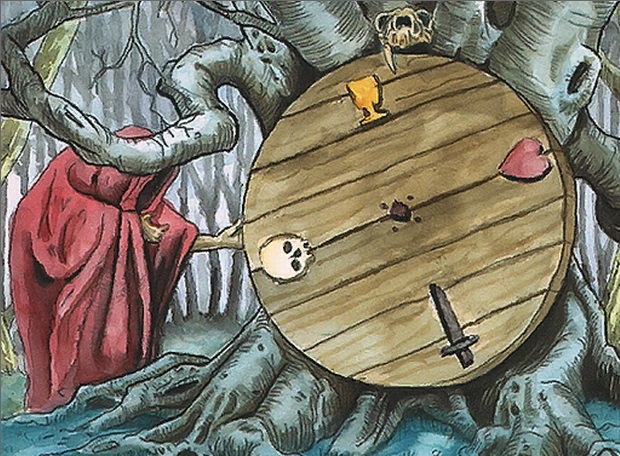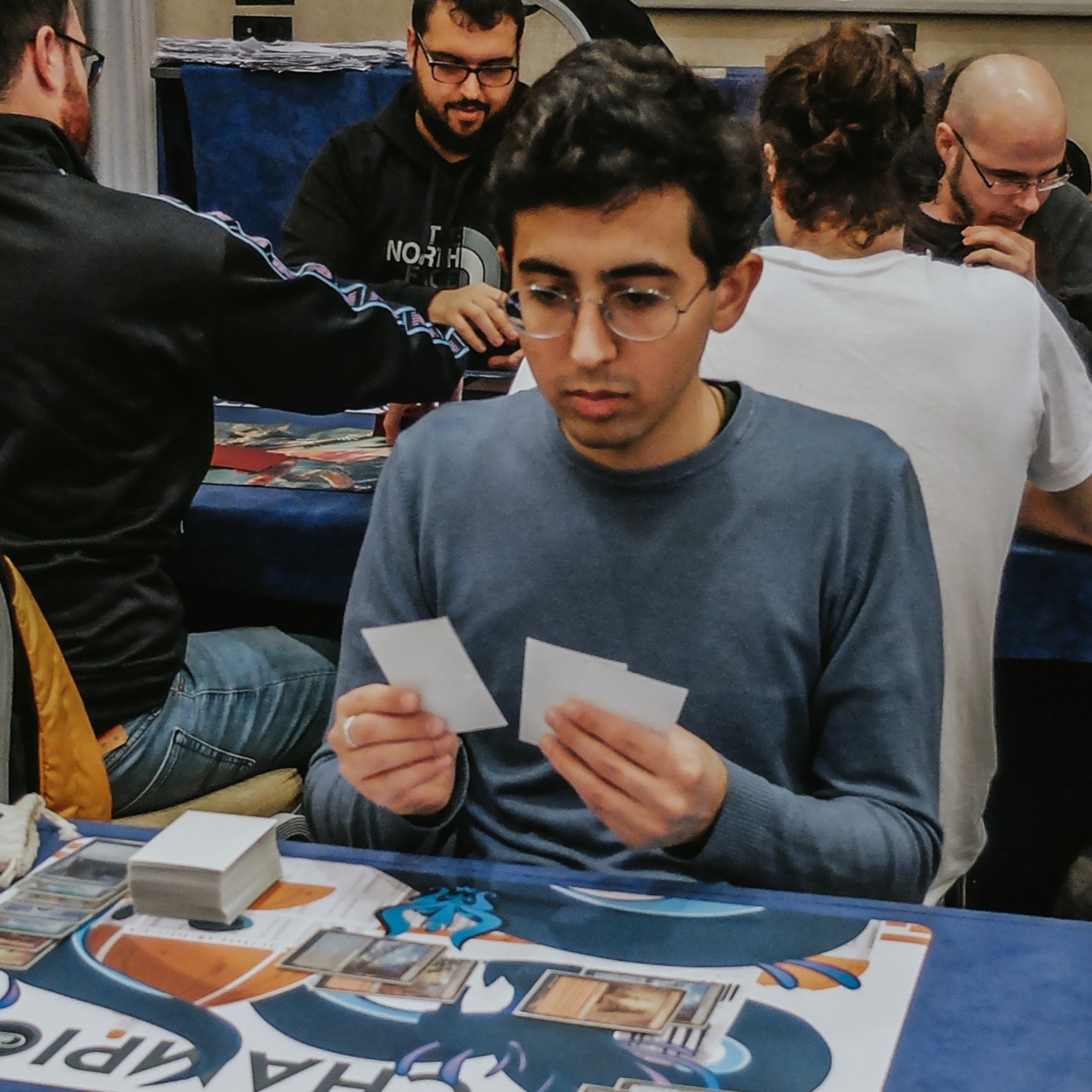Welcome to the second part of this series of articles, where I show and comment on the data that I’ve gathered between Sanctuary’s ban and the release of Commander Masters from my 3452 Pauper matches. If you missed the first part, you should check it out to get familiar with the dataset, but as far as topics go, each part should be fairly independent. The last two parts are scheduled to be released in the next two weeks.
Why Pauper is Special
Mulligans are one of the most important parts of the game, and different formats have different relationships with them, in regard to both deckbuilding and gameplay. In Pauper, due to the card pool’s low power level, the number of spells that a player casts during the game is often more important than the individual qualities of these spells. Traditionally, there are two main ways to approach this issue:
A. Aiming to draw more cards than the opponent.
B. Aiming to draw a better proportion of lands and spells than the opponent.
Now, decks aren’t black and white: they tend to be on a spectrum between A and B, and sometimes they don’t even care much about either of these strategies. But overall these strategies are very popular. It’s evident how to pursue strategy A, but strategy B is a bit trickier.
The easiest way to enact B is to play Preordain, Brainstorm, or similar cards, but these effects are limited to one color, with some rare exceptions (that usually require deckbuilding restrictions). The most common way Pauper decks try to follow B simply consists of playing fewer lands. The plan is to rely on mulligans to have a good amount of lands in the starting hand while being insured against flood by the low land count. Naturally, this increases mulligan rate, to the detriment of A. But I believe that Pauper deckbuilders aren’t crazy, and this method is ultimately a net positive, as much as the variance increase is a pain for the player.
I estimate that the improved keep rate that playing a normal amount of lands would bring to a Pauper player would let them start each game with an average of 0.2 additional cards at best. But since Pauper games go quite long, they would probably draw more than 0.2 useless lands throughout the game. For example, I have real data from Grixis Affinity saying that the deck sees around 24 cards per game (we’ll talk later about the source), so I believe that adding 3 lands to Affinity would make me draw around 1.2 extra lands per game. Finding the right balance is hard, but this kind of challenge is part of what makes deckbuilding fun.
Extra lands are such a burden for Pauper decks because we lack some of the powerful technology that is reserved for higher rarities, like man-lands and modal double-faced cards (MDFCs). Let’s try to make a comparison with other formats. These formats aren’t the focus of the article and I’m genuinely ignorant about them, so forgive me if the way I gather data about them is a bit rough and just aimed towards building a quick visualization. I’m going to show you the average amount of mana sources per deck in each of the main formats. LOR landcyclers and MDFCs with a land face will be considered lands. Moxen and 1 mana value dorks will be considered extra mana sources. Good cantrips and rituals will be considered half of an extra mana source. Bad cantrips will be considered spells. The data comes from the first ten decks on the MtgGoldfish page of each format on October 26th, 2023, except for Vintage, where I skipped two Bazaar decks that weren’t looking to pay any mana for their spells.
As you can see, Pauper decks tend to have about three mana sources less than decks from other formats. If you’d like to see if that’s the case for a specific Pauper archetype, remember to not compare it with the average deck from another format, but instead with a similar deck in that format.
Mulligans per game
The first thing to check about mulligans is their frequency. I measure that in terms of mulligans per game. When you keep 7 you took 0 mulligans, when you keep 6 you took 1 mulligan, and so on. You can also see it like this: a deck’s average number of cards in the starting hand is 7 minus its mulligans per game.
Most functional Pauper decks average between 0.25 and 0.55 mulligans per game. Even though this gap might seem small, it’s very perceivable. If you play a deck with 0.5 mulligans per game, you’ll feel like a constant victim of variance and if you play a deck with 0.3 mulligans per game you’ll feel blessed. Some unfair decks like Turbo Initiative take great benefit from hard-mulliganing towards specific cards, and from my little experience, I would say that any version of Tron also has an abnormally high mulligan rate while still functioning properly (because of the inherent card advantage in the Urza lands). One thing is for sure: if your deck’s mulligan rate is above 0.55 you’re either doing something wrong or playing something very unfair. What about the lower end of mulligan rate? As of now, I’ve only ever recorded less than 0.3 MpG with Kuldotha Red, and I’ve found it astonishing. With that deck, I’ve mulliganed to five about twice every 100 games. It’s the pinnacle of consistency, apt for punishing opposing mulligans and stumbles.
The two strategies that I was talking about in the opening section are particularly important for reactive decks, which can be roughly divided into two groups based on the strategy they follow the most. Decks from group A tend to mulligan a lot to set up their engines but recover fairly well once they’re online. Decks from group B mulligan rarely but tend to suffer significantly when they do. If you’re lower on cards you’re more likely to be missing both lands and spells, and card selection is less valuable at that point.
Proactive decks instead are very diversified, and there aren’t patterns to describe their mulligan rates: each one works its way.
There are many Pauper decks that I’ve never felt inclined to play, or that I haven’t played enough to gather meaningful mulligan data. Recently, though, I’ve discovered an amazing program: MTGO Tracker by Chris Erickson, which extracts data from your Magic Online game logs. Using this tracker, I was able to get at least some insight into other decks using my opponents’ mulligans.
Before I show you what I’ve got I must clarify a couple of things.
1) I’ve only got eleven months of game logs to analyze because they get erased at each uninstall.
2) My deck choices might’ve had an impact on my opponents’ mulligans.
That said, I find it reassuring that the numbers seem to agree with the picture I painted above. Boros Synth, the most classic example of an advantage-based deck, is solidly inside that category with its 0.47 MpG (over 111 games). UB Terror, the most popular quality-based deck across the 11 months, rivals Kuldotha for the lowest mulligan rate, with 0.28 MpG (over 272 games).
If you’re curious about other proactive decks instead, we can see how Bogles performed in my opponents’ hands. Often portrayed as a mulligan-heavy deck, Bogles’ performance is indeed comparable to the clunkiest midrange decks, being 0.51 MpG (over 138 games).
I’d be curious to see some numbers about Cawgate. From the exterior, it looks like a deck with a fairly low mulligan rate, but also like a deck whose mulligans don’t take much of a toll on its win rate, contrary to what usually happens to quality-based decks. Unfortunately, I don’t have those numbers (I hope some readers can provide them!), but this is probably part of why Cawgate has been one of the best decks in the format at every point of the last year.
The Impact of Mulligans
As I stated above, some decks are more impacted than others by mulligans. To see this, I’ve checked how win rates decrease from 7-card hands to 6-card hands. My data about 5-card hands was too scarce for the most part.
Last week, I asked readers to guess Affinity’s first mulligan win% delta. I got 28 replies and I think they went pretty well. The average distance of guesses from the value recorded in my sheets was 4.9%. Given that the value is obtained with a subtraction, which makes the confidence interval larger, the 95% confidence interval for this number was +/- 6.1%. 78.6% of the replies fell within this confidence interval.
Now I will attempt to assess how much my decks were affected by mulligans overall, by multiplying their mulligan win% delta by their mulligans per game. In the following chart, I’ve colored in red decks with less than 55% match win%. There are several possible reasons why I could’ve had a bad win rate with a certain deck. The most common possibilities are:
- I played the deck incorrectly
- The metagame was hostile to the deck
- The deck just didn’t work
In the case of decks that didn’t work, their mulligan impact was often a major factor.
Bonus Stats
It would be interesting to see the relationships between mulligans and the factors that I presented last time, i.e. die roll and sideboarding. Unfortunately, the more conditions I put on my dataset, the less amount of data I’m going to obtain. Sample sizes for these complex parameters would be even sketchier than my usual ones.
The only way to get respectable samples would be to work under the hypothesis that these numbers are independent of deck choice. This hypothesis is certainly problematic, but I believe that it’s much less problematic here than in other cases. For example, mulligan rate is inextricably tied to deck choice, but the difference in mulligan rate between play and draw could be relatively independent of deck choice.
Over the 8496 games of these three years, I have:
- Taken 0.02 more mulligans per game on the play than on the draw.
- Taken 0.04 more mulligans per game in postboard games than in preboard games.
- Had a 2.76% smaller 1st mulligan w% delta postboard than preboard.
I hope you enjoyed this article. See you next week, when I will talk about the changes that Pauper went through in three years, and I will show how the flow of the metagame and inherent variance impacted the performances of three of my decks.
If you’re interested in tracking your games, you can make a copy of this spreadsheet.








![[ENG Report] Winner Awesome Pauper – Il Labirinto: Francesco Quagliata with Golgari Gardens](https://www.pauperwave.com/wp-content/uploads/2024/01/215-400x250.jpg)


